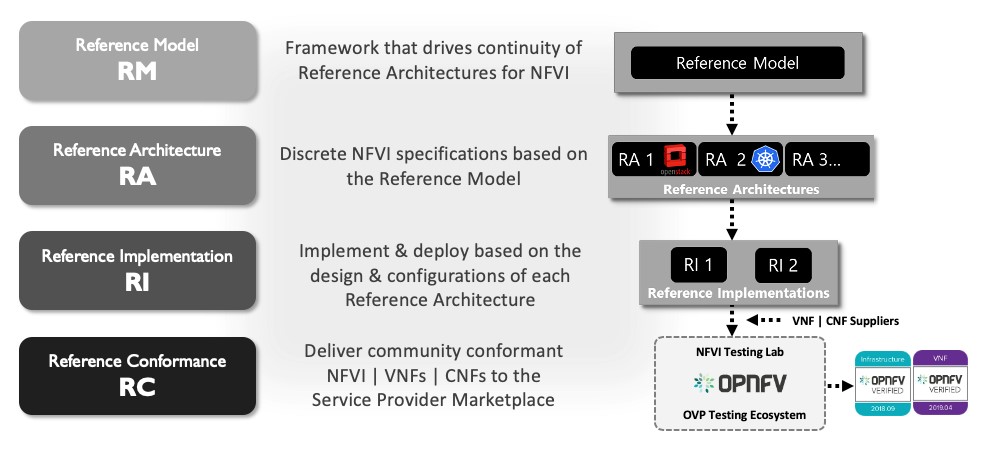It’s a Monday afternoon in the middle of January, and a few members of my team and I are sitting in a non-descript conference room actively discussing network function virtualization infrastructure (NFVi) with the likes of Vodaphone, Verizon, Orange, and other communications operators and suppliers from around the world.
So why are we here? Over 75 engineers and technology leaders representing 26 telecom operators and suppliers from around the world had gathered face to face for a set of working sessions under the governance of the Common NFVi Telco Taskforce (CNTT) and supported by the Linux Foundation Networking (LFN)/GSMA. The goal is to further a collaboration aimed at accelerating the delivery of software defined networks by defining NFVi standards and putting in place the testing to ensure compliance against these standards. As great as the internet is, sometimes there’s no substitute for getting a bunch of engineers in a room with a whiteboard and a deadline.
Over the past 5+ years, AT&T in collaboration with other operators has been focused on driving the development of innovative new software defined networking (SDN) through network function virtualization (NFV). NFV is a way to virtualize network functions, such as routers, firewalls, and load balancers, that telecommunications operators use to deliver services like internet connectivity on your mobile phone. These functions have traditionally been run on proprietary hardware that is expensive, takes a long time to deploy in the network, and is not designed to quickly deploy new capabilities. With NFV, these services are packaged as software running in virtual machines (VMs), allowing operators to run their network on standard servers instead of proprietary equipment and easily add new capabilities through software. An added benefit of NFV is that you don’t need to have dedicated hardware for each network function. NFV enables operators to deliver new software-based network services and applications on-demand, leveraging pools of NFVi, which improves operations, scalability, and agility. NFVi, and the SDN it enables, is helping operators deliver communication services to you and me much faster than ever before.
So, what is the problem? Well, with the race to deliver this new technology each operator and the suppliers that support them have implemented NFVi differently, even though in most cases using many of the same open source software projects like ONAP, OpenStack, Airship and Kubernetes. The net result is that suppliers of the VNFs (e.g. a virtualized router) must either customize their software or the NFVi itself needs to be customized for every operator installation. This is slow and costly for both the operator and the VNF supplier, which inhibits the industry from achieving the full benefits of this innovative technology.
What CNTT is doing is reducing the friction to adopting SDN at scale, by driving commonality into the NFVi used to deploy and run virtualized network functions (VNFs). In addition, CNTT is looking forward to doing the same for cloud-native network functions (CNFs), where services are packaged in containers and implemented conformant with cloud-native principles.
So how is CNTT achieving this goal? The simplest way to think about it is that CNTT is documenting common NFVi designs and putting in place the testing utilizing Open Platform for NFV (OPNFV), another Linux Foundation Networking project, to allow any supplier or operator implementing an NFVi to ensure they are conformant to the standards. This will allow for simpler adoption of NFVi and accelerate the rollout of VNFs and CNFs used by operators to deliver their services like 5G and whatever comes next. This is good for communication operators, good for suppliers and ultimately good for business and consumers.
So, back to the conference room. It is now late Thursday and there is a collective optimism in the room that we are on the right path and have made solid progress towards our goal. Some of the accomplishments include: GSMA commitment to make the Reference Model a standard, supplier volunteers to pilot the 1st Reference Conformance, and alignment with OPNFV on their role in support of CNTT. It is a good start to 2020, and with the continued collaboration in CNTT, we can accelerate the pace of SDN deployments globally and the next generation of communications services that are now possible.

PR Archives: Latest, By Company, By Date